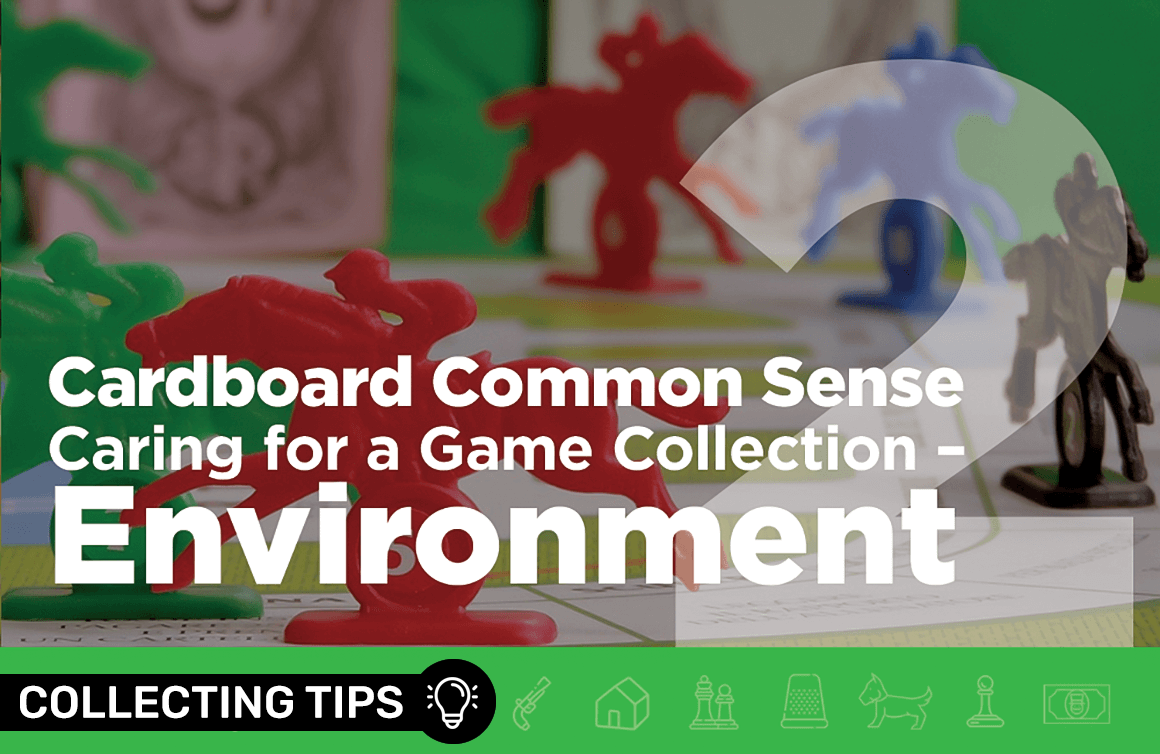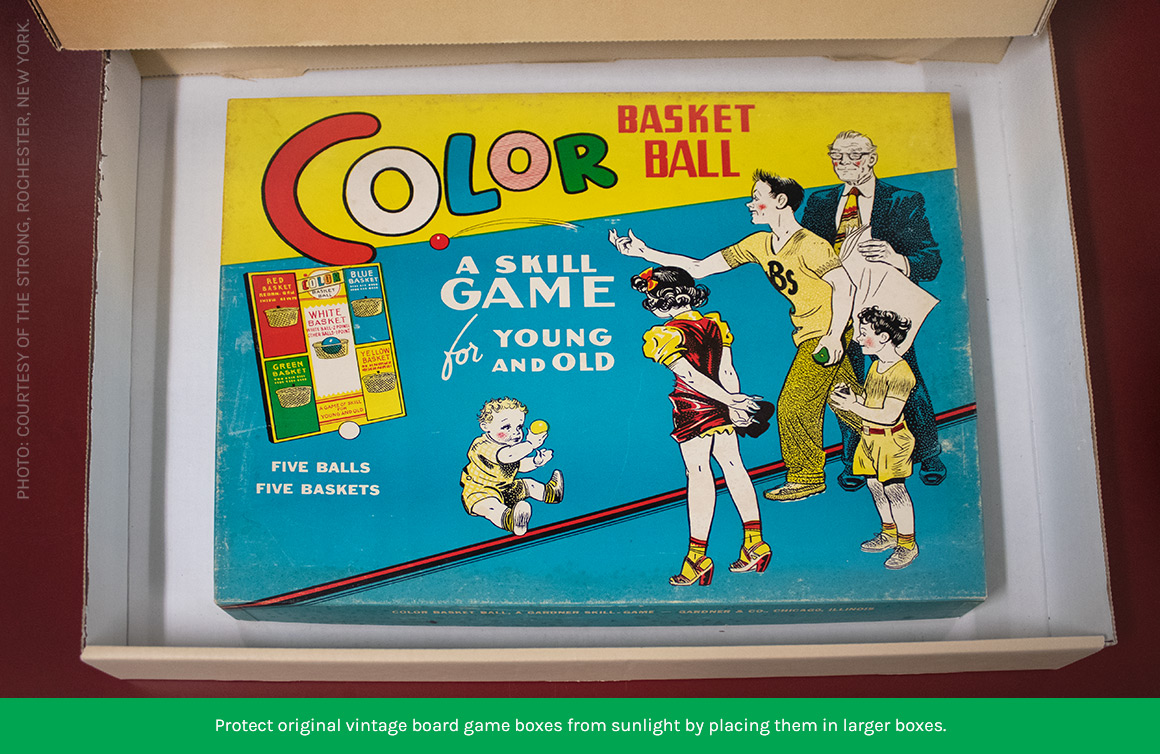Let’s imagine you left your Loopin’ Louie game set up in the game room or office, on a small table to the side for a couple weeks. You and your team played it during a break between a game of Carcassonne and the beginning of a long game of Pandemic. And you knew you’d get back to it the next time Karen took a break to heat up some Hot Pockets, or you were waiting for players to arrive. No big deal, right? But—there’s a window in that room that lets direct sun hit that side table for two hours a day, and Louie’s plastic plane is solid red, through and through. Life got in the way and you didn’t get back to gaming for a couple weeks. You might not notice but Louie’s plane will be lighter—it has faded―on the side that got the most direct sun. And if you left the box cover in that same sunlight, the red and all colors will have faded. There is a lesson here and a simple rule to remember. If you take care of the paper-based box and the contents are safely inside, you’ll be taking care of the game itself.
Sunlight is sneaky. We don’t necessarily think about it when we’re laying out furniture, such as game storage shelves, in a room. But it should be one of our main concerns. The sun gives us infrared, visible, and ultraviolet light—all harmful to printed paper artifacts and other materials common to game contents and boxes. The simple rule is never opposite a window that gets direct light, and you may want to consider dark shades or UV film on any window in a room in which games are stored—because all light can be harmful, long term.
And long term is key for the next environmental challenge—temperature. People often ask me, what is the ideal temperature for storing games? The answer is basic. Any temperature, within reason, is good for games if it stays steady. In other words, attics, where extreme fluctuations in temperature happen seasonally, are out. Cooler is always better, but steady temp is key. So—if you keep your games in your living space, where you maintain a steady temperature year-round, you’re doing pretty good.
The third factor relates to temperature. When I wrote “cooler is always better,” that’s because cooler air holds less water. Water in the air, especially if exposed to extremes in temperature flux, will migrate to dry paper box materials. As temps change, the water goes in and out of the paper, causing warp. I knew game collectors who kept a massive collection in their heated basement. They collected delicate 19th century board games with that beautiful lithographed paper glued to wood and cardboard. Their house wasn’t massive, but they did keep two large dehumidifiers going all the time and circulated the air gently with fans. The games survived, and now live in a museum.
A final word about environment, and the environment inside a game box. If you’re a purist, you may want to keep your game box inside of another box. Why? You’re creating a mini environment to protect the box from damage from all the factors above. Another box provides an extra layer of protection should the dehumidifier or air conditioner fail. A boxed game will protect the boxed contents longer while you make repairs.
Some thoughts about the environment in which we store our games. It’s simple—keep them where you live, so they’re as comfortable as you are. If you are sweltering in the summer, you may want to add a layer of protection, or better yet—an AC unit. And don’t forget to play them!


